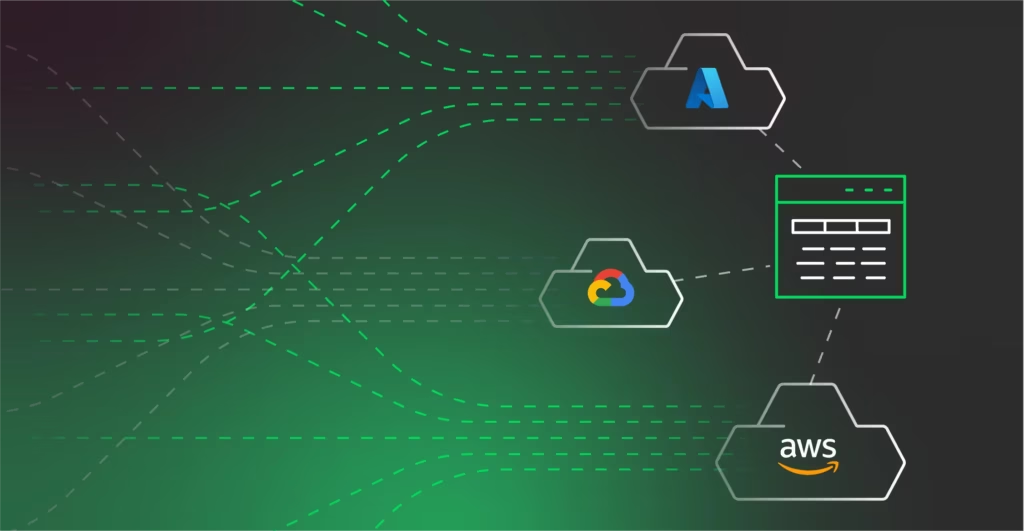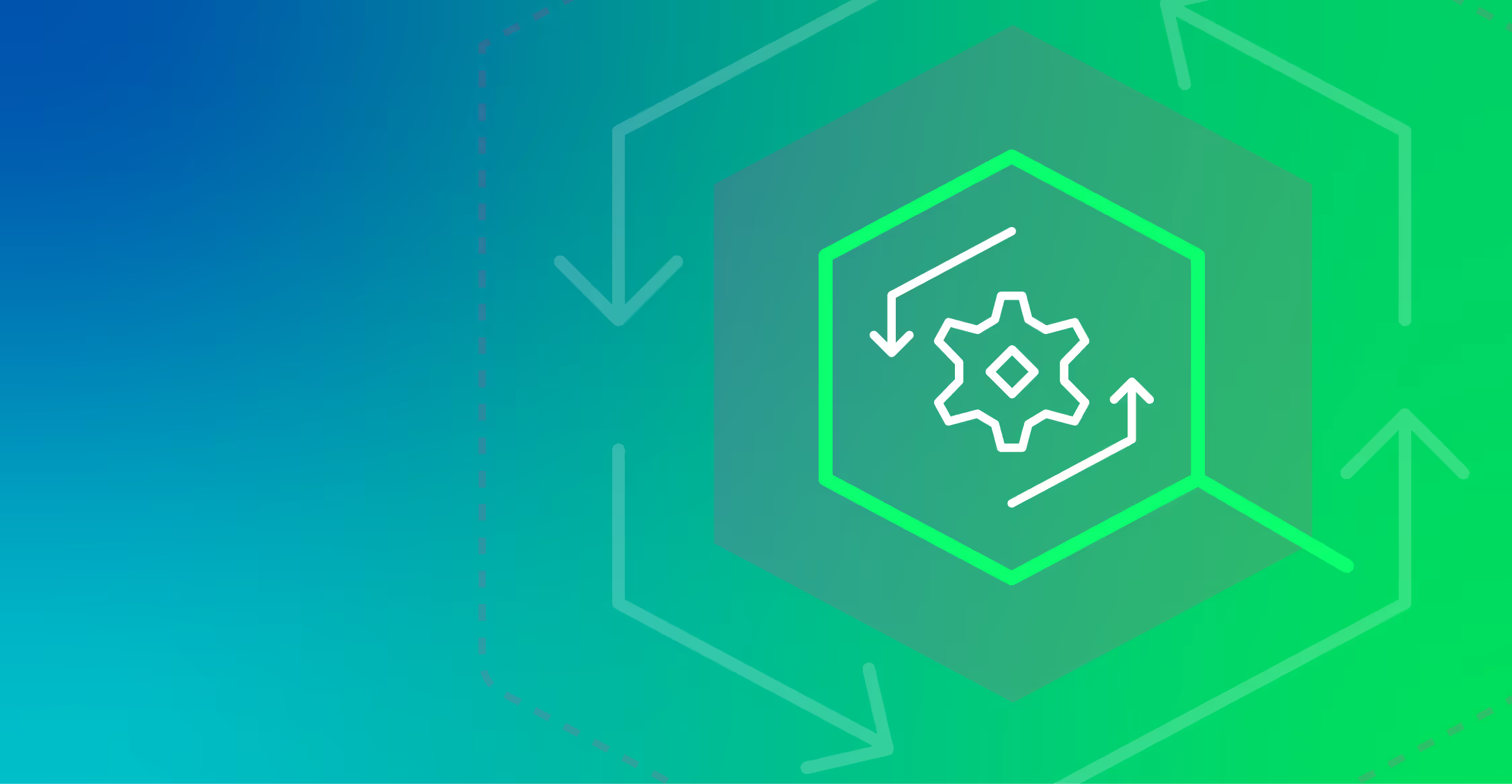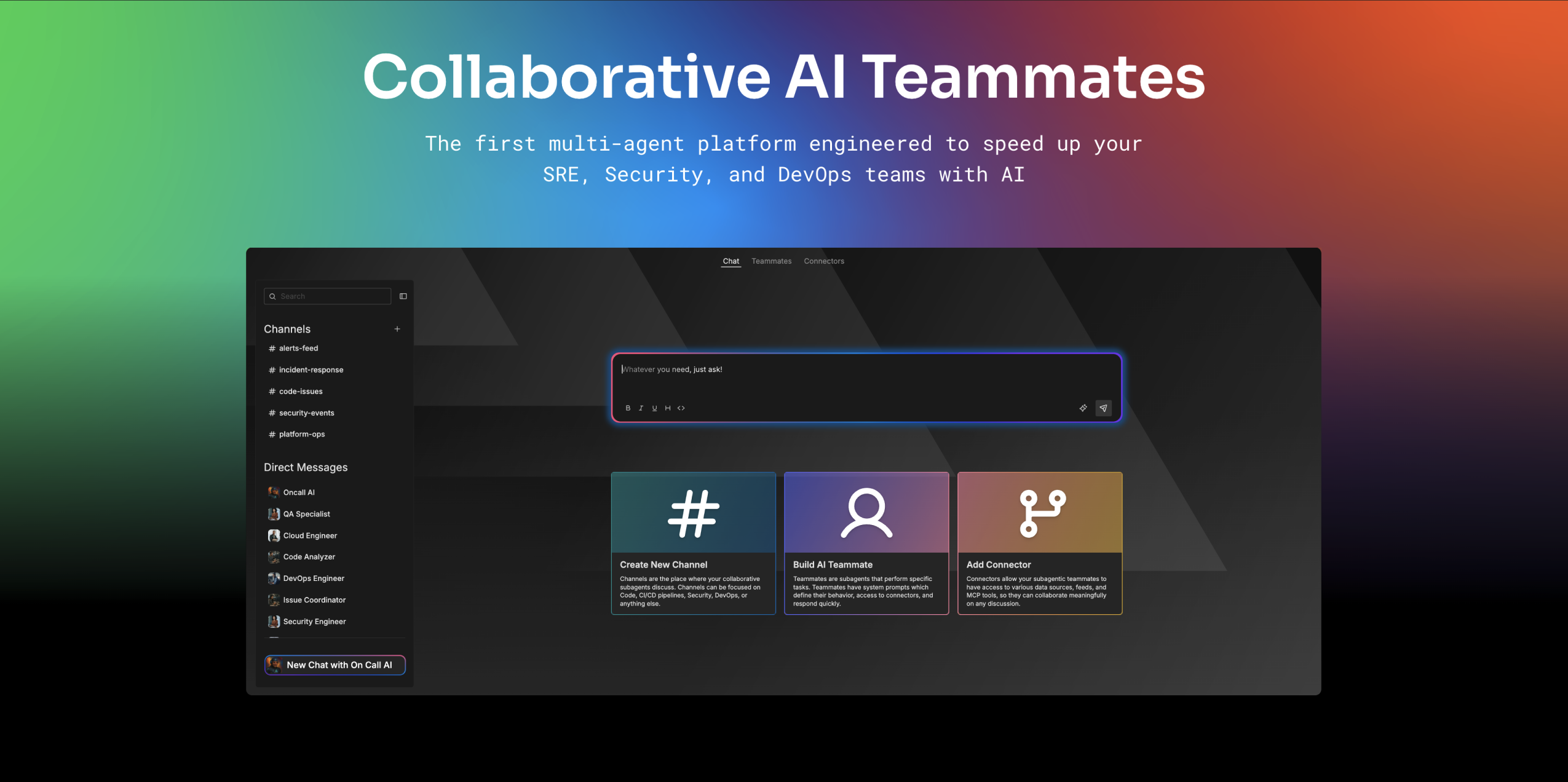Cloud infrastructures have grown more complex over the years, in an effort to remain consistently reliable. Traditionally, this meant scaling infrastructure up within a single cloud environment. However, many organizations have transitioned to multi-cloud architectures, to further optimize the flexibility, scalability, and security of their systems. As a result, DevOps, IT developers, and security teams have been finding new ways to manage their systems and infrastructure, creating as a result the concept of multi-cloud observability. At a high-level, multi-cloud observability enables the real-time analysis of applications and infrastructure across several cloud platforms.
As organizations continue to adopt multi-cloud strategies, integrating diverse platforms across an entire cloud landscape has grown in difficulty. Multi-cloud observability has paved the way for IT leaders and developers to seek the right solutions to handle their new modern cloud ecosystems, as mastering observability across diverse environments is essential.
This article will explore six multi-cloud observability best practices, and explain how observability can help teams maximize the use and value of their data.
Key Takeaways
- Implementing multi-cloud observability best practices is crucial for organizations to optimize performance, enhance security, and ensure reliability across all cloud platforms.
- Multi-cloud environments offer flexibility and maximize opportunities by providing access to the unique features from each cloud platform. However, it also poses many operational challenges and complications for DevOps and organizations.
- By implementing best practices, organizations can have a unified view of their infrastructures and systems built on several cloud platforms. It also eases monitoring, maintenance, anomaly detection, and security protocols.
- Providing Unified Observability Platforms, Integrating Centralized Data Collection, and deploying AI and machine learning are some of the best practices developers can use in their multi-cloud platforms.
- Leveraging third-party observability tools like Edge Delta helps organizations unify multi-cloud environments. With tools like AI and visual pipelines, teams can have consistent data for analysis and manage them all in a single platform.
What are Multi-cloud Environments, Why Are They Important?
A multi-cloud environment, very simply, is an environment which uses / interacts with different cloud ecosystems. They are comprised of any combination of private, public, or hybrid cloud environments. They can also be a combination of public cloud with on-premises operations services running on various cloud providers. This approach might mean, from a practical perspective, leveraging a combination of public clouds like AWS, Azure, and Google Cloud Platform (GCP) or integrating public clouds with private or hybrid clouds.
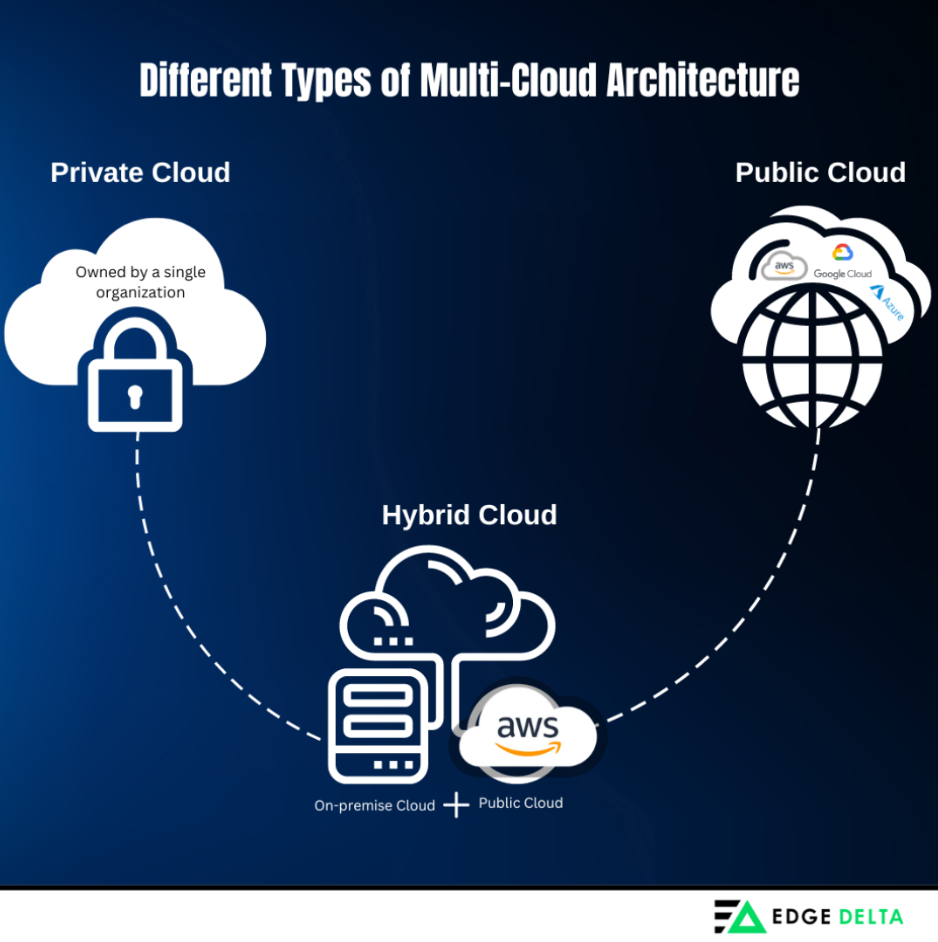
Each cloud service comes with their own unique set of pros and cons. Some might excel in cost efficiency, others in performance, and a few even in workflow compatibility. By leveraging a collection of cloud environments, organizations can pick and choose the features to use that perform optimally across all environments, instead of being forced to use only the ones offered by a single environment they are locked-in with.
Why Multi-Cloud Observability?
The downside of multi-cloud environments? The complexity. Managing micro-services is complex enough when using only one cloud environment: it becomes far more difficult when also orchestrating and managing workloads spanning across multiple clouds.
Multi-cloud observability has emerged as the solution for this problem, keeping everything running smoothly. However, that isn’t to say there aren’t challenges associated with managing a multi-cloud observability solution. Below are some of the most common observability challenges from a multi-cloud perspective.
Observability Challenges in Multi-Cloud Environments
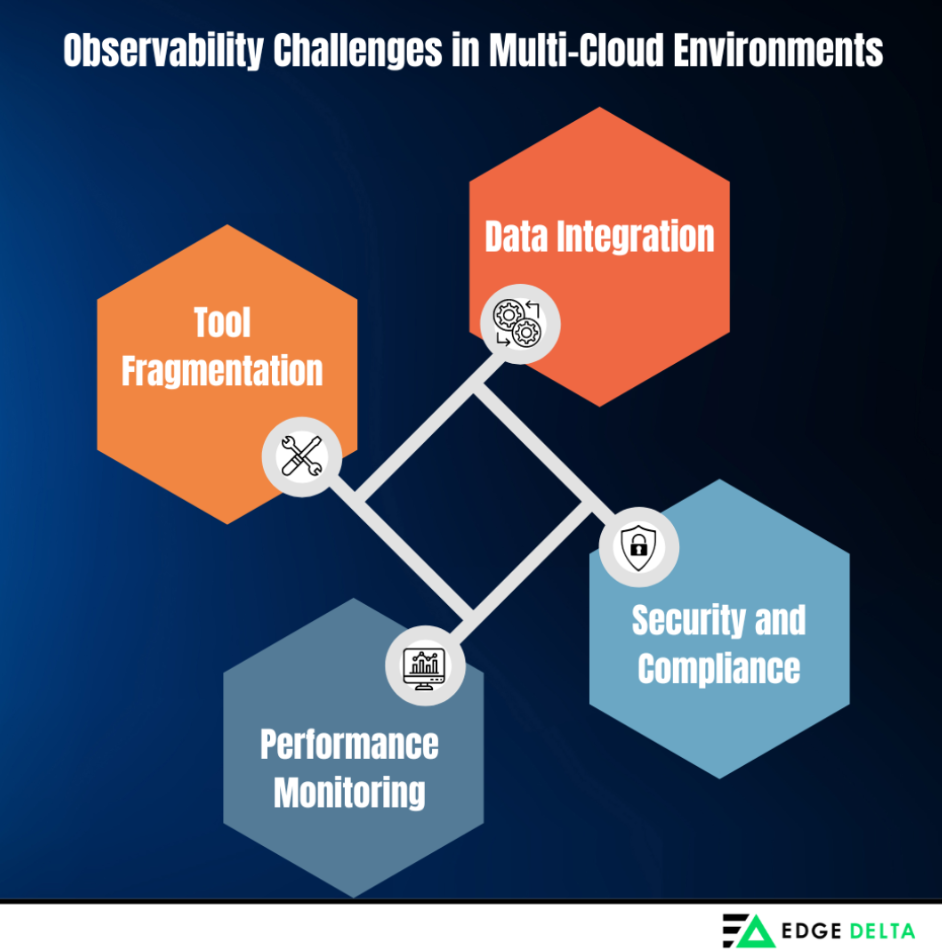
Challenge 1: Data Silos
In a multi-cloud environment, different cloud platforms often have unique monitoring and logging tools, which can result in data silos. These silos make it difficult to obtain a unified view of the entire infrastructure, leading to inconsistent analysis, blind spots in monitoring, and potential delays in identifying and resolving issues.
Challenge 2: Data Integration
Integrating data from several cloud environments is a big hurdle for developers. It gets even more complicated to derive value out of it. Thus, multi-cloud adoption requires a strategic approach to data management and application deployment. With proper data integration, teams can ensure that different clouds work as one unit rather than isolated silos.
Challenge 3: Tool Fragmentation and Standards
Managing several cloud environments means having more observability tools to use. While some DevOps tools are easy to use, most are complex, and using plenty of them at a time makes the process more challenging.
On top of this, different cloud providers often have varying standards and formats for metrics and logs. This inconsistency can complicate the correlation and analysis of data across platforms, making it challenging to maintain a holistic understanding of system performance and health.
Challenge 4: Performance Issues
Operating across multiple clouds can introduce latency and performance variability due to the inherent differences in network infrastructure and data transfer speeds between providers. This variability can affect the performance of applications and services, leading to suboptimal user experiences.
Challenge 5: Security and Compliance
One of the unique challenges in multi-cloud observability is ensuring security and compliance. Maintaining sensitive data on various cloud platforms entails a massive liability, so security teams must protect everything.
Consistent and reliable security measures are difficult to maintain across all cloud platforms. Every provider will have security protocols and jurisdictions to ensure a secure multi-cloud environment. As a result, it becomes challenging to implement another security measure.
Best Practices for Multi-Cloud Observability
A multi-cloud environment requires an effective cloud strategy. With proper implementation of observability best practices, businesses and IT professionals can develop their systems efficiently and proactively improve the end-user experience.
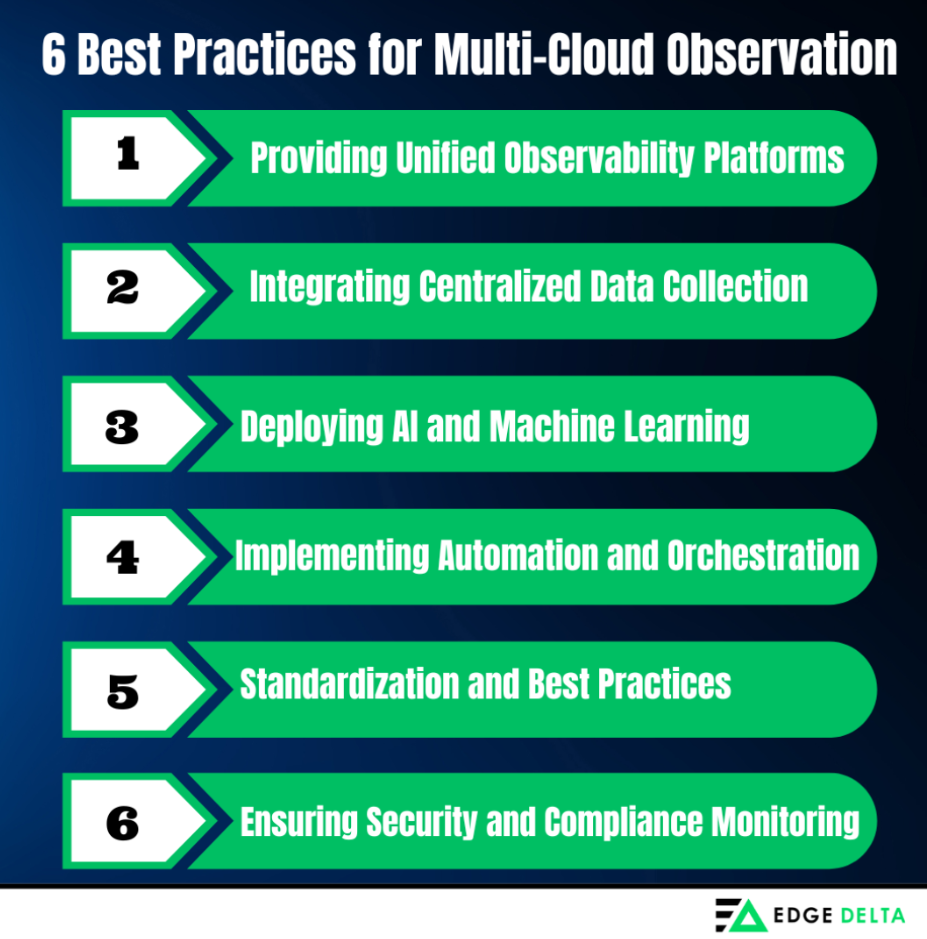
Best Practice #1: Using Unified Observability Platforms
Unified observability platforms can address many multi-cloud challenges by providing an entire overview of the organization’s entire cloud environment, making it easier to see the following:
- Resources in use
- Locations of data and cloud environments
- Cloud connection mappings
They eliminate data silos and ensures that all observability data is accessible in one place, simplifying monitoring, troubleshooting, and analysis. Unified view can help teams identify potentially overlapping managed services.
Best Practice #2: Integrating Centralized Data Collection
A centralized observability platform visualizes data collection from the organization’s infrastructure. The same platform should also store the collected data. This process is critical to effective observability as it involves gathering data from various sources, including telemetry data, which includes:
- Logs
- Metrics
- Traces
- Events
Centralized observability integrates data from multiple sources to provide a holistic view of the organization’s data pipeline. Additionally, it enables teams to ensure enhanced data quality and system reliability and detect the following:
- Issues
- Anomalies
- Inconsistencies
Best Practice #3: Deploying AI and Machine Learning To Detect Anomalies
Leveraging AI and machine learning ensures a secure, efficient, and robust multi-cloud environment.
AI and machine learning enhance observability by automating incident detection and response. These technologies analyze patterns, detect anomalies, and provide predictive insights. AI-driven systems continuously monitor the multi-cloud environment, swiftly addressing issues and spotting unusual patterns early.
Additionally, Predictive analytics powered by AI can forecast trends and infrastructure needs, optimizing resource management and enhancing security by identifying potential threats
Best Practice #4: Implementing Automation and Orchestration
Automation and orchestration are essential to effectively managing multi-cloud observability. Effective multi-cloud management relies heavily on automation, using cloud APIs to automate repetitive manual processes, which helps lower the likelihood of human mistakes. Automation and orchestration can streamline observability processes and reduce manual intervention.
Orchestration and automation improves the speed and reliability of the following tasks:
- Deploying applications
- Enforcing consistent rules across cloud environments
- Scaling operations to meet current traffic or usage needs
- Transferring workloads between different clouds
- Provisioning and de-provisioning cloud services
- Responding to threats, anomalies, and problems
Best Practice #5: Adopting Standardization and Best Practices
Multiple cloud platforms have varying certifications, features, and compliance obligations. Adopting standardization and best practices can mitigate these differences and observability challenges. Adhering to industry-standard protocols and APIs enables the following:
- Efficient operations and data transfer
- Centralized management
- Workload portability
By following best practices and standardization, organizations can leverage their multi-cloud environment, ensuring vital infrastructure utilization and workloads while maintaining compliance with quality infrastructure.
Best Practice #6: Ensuring Security and Compliance Monitoring
Data compliance and security are integral to every organization working with multi-cloud environments. Storing sensitive data on various cloud platforms is a huge liability, and the security team needs to ensure proper security.
Maintaining strong security and compliance monitoring is vital to preventing problems from arising across multi-cloud platforms and establishing tools and processes. Here are some of the best practices in security and monitoring.
- Developing cloud security strategies and relevant compliance rules such as PCI-DSS and HIPAA
- Auditing login information, including new users, login duration, and user activity
- Updating tools and platforms regularly using the latest patches
- Implementing end-to-end encryption to secure data and inter-cloud communications
- Adopting DevSecOps into organizations’ CI/CD pipeline
- Developing mitigation plans for various types of cyber attacks
- Investing in proper disaster and data recovery measures
- Implementing security awareness training for teams and developers
Conclusion
Effective management of a multi-cloud environment can significantly improve the organization’s flexibility and extensibility and ensure that new providers and services can be consistently added. Additionally, maintaining consistency and embracing automation across the enterprise by implementing consistent security and governance will lead to successful multi-cloud management.
FAQs on Multi-cloud Observability
What is cloud observability?
Cloud observability is an observability service that helps you understand your cloud applications’ behavior, health, and performance.
What are the key features of multi-cloud management?
Multi-cloud management offers cost, scalability, risk, and compliance management features.
How do you manage multi-cloud environments?
Managing multi-cloud environments involves understanding the organization’s needs and identifying the best multi-cloud management platform. Only then should you should adopt a multi-cloud management platform, implement a cloud-native architecture, optimize your cloud costs, and secure your cloud data.
Is multi-cloud a good strategy?
Multi-cloud is a good strategy as it offers flexibility and data security; however, it isn’t for everyone. Consider the importance of adding complexity to your systems for improved high-level performance. If you are not at a considerable scale, you may want to wait before jumping into the world of multi-cloud environments.

